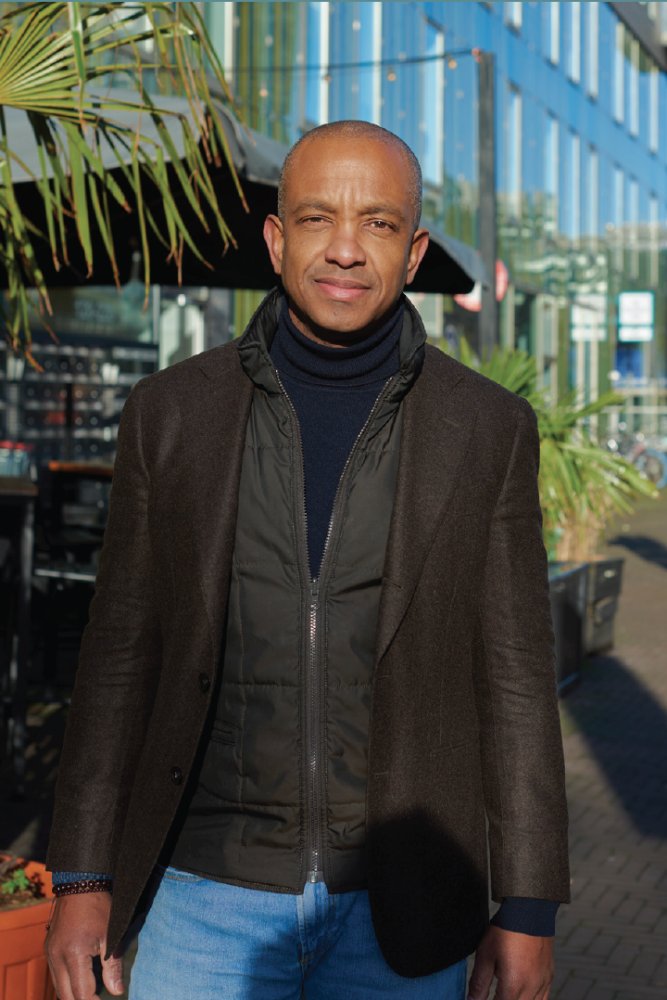“Ground floors deserve more attention from property owners”
Attractive locations offering a distinctive range of retail, dining, leisure, culture and public services are a widely held wish but fairly rare in real life. While Zuidas may have achieved major leaps towards becoming a mixed-use area in recent years, according to mixed-use strategist Tony Wijntuin there is still untapped potential for injecting more life into the district. As the owner of consulting firm WYNE Strategy & Innovation and a resident of Buitenveldert, he is both a frequent visitor and permanent Zuidas watcher.
Tony passes through the area several times a week, whether on his way home, for business meetings or to meet friends for drinks. Precisely that mixed offering is what so characterizes Zuidas, he observes. “It is a high-traffic location where all different facets come together. Originally, it was a full-on business area, but more and more people have come to live here. Amsterdam Zuid Station is a major hub and it’s only growing. This dynamic is rare, and creates a ton of potential for the future.”
Pivotal squares
Eight years ago, Tony was already working on a retail vision for Zuidas with the City of Amsterdam. One key focus was the occupancy of the commercial units on the ground floor of the buildings. Tony envisions Zuidas as a city centre, with Gustav Mahlerlaan as the high street, Claude Debussylaan as a dwelling street, and three main squares: Zuidplein, Gustav Mahlerplein and George Gershwinplein. Wijntuin contends that these three squares, laid out along a single axis, play a pivotal role in the success of the amenities at eye level.
High ‘suits and heels’ quotient
A great deal has changed since 2015. Back then, George Gershwinplein was still the quietest square in Zuidas, whereas now Tony calls it the ‘frontrunner’. There’s a variety of drinking and dining establishments, including the Michelin-starred Bolenius, and there’s even a weekly market. And while Zuidplein and Gustav Mahlerplein may still get the most of traffic, Tony believes both squares are due for a revamp in terms of programme, identity and attractiveness.
“Many restaurants and shops have been there for years or belong to a chain”, he continues, “as well as being focused mainly on the professional crowd that’s in Zuidas during business hours. And, sure, it’s important to cater to that target group, but there’s not enough diversity. Besides substance, identity is also important. The building façades could be made a whole lot more attractive. So, have windows people can look through, let them see and tempt them to come inside.”
Creative hotspot
Tony believes more social and cultural amenities would add tremendous value to Zuidas. “Why not bring in a creative maker space, pop music venue or an incubator for artists as befits the character of this location? These are must-haves to further reinforce the dynamic here and give people who wouldn’t normally visit Zuidas specific reasons to come here.”
Together, such amenities constitute what Tony calls a ‘Morning, Afternoon and Night programme’, or ‘MAN’ (the equivalent of ‘OMA’ in Dutch). “Zuidas is mostly dead after five o’clock and at weekends. A balanced mix of commercial, cultural and social services and amenities could change that. An added bonus is that the more attractive the neighbourhood look, the more attractive the real estate becomes. Which means it also indirectly serves a commercial interest for property owners.”
Afterthought
According to Tony, when leasing office or residential buildings, the focus still tends to be on filling the upper floors relegating ground floors to more of an afterthought. Owners need to realign their priorities, he says. “In its coordinating and facilitating role, the City of Amsterdam could promote higher quality, diversity and appeal. For instance, by stipulating specific programmatic requirements in tenders for its land holdings. That turn Zuidas into an even more dynamic location.”
